- What is a Gaited Horse - October 5, 2023
- What to Look at When Getting a New Farrier - September 21, 2023
- Best Horse Feeds for Older Horses - September 21, 2023
Recently, a new kid at the barn asked me how a horse could run, so I told him that horses could walk, trot, canter, and gallop. Of course, a horse can also back up, just like a car. But just then, one of the facility’s American Saddlebreds (Saddler for short) came past in an exaggerated rack.
The child looked at me with a frown, and I realized I would have to get creative to explain just what a gaited horse is and why they could move differently from most other horses. After some head scratching, I finally had the perfect definition of “what is a gaited horse.”
Have you ever wondered what makes a horse gaited versus non-gaited? Is it just flashy descriptions for a movement that looks awkward (but is really comfortable)? Trot on down to the answer below.
Bottom Line Up Front: A Definition of a Gaited Horse
A gaited horse can move at a pace that’s different from the trot from other horses. While a gaited horse may trot normally, they may also naturally move in the unique gait (instead of trotting).
The particular movement of a gaited horse can be a four-beat movement that keeps one hoof on the ground at all times, reducing the suspension phase of the movement. It can also be a two-beat movement.
Where normal horse gaits involve the horse moving their feet in diagonal pairs, a gaited horse moves the pairs of feet on either side together (so right back and right front together and left back and left front together).
The gait has a smoother feel as the horse requires less energy and a flatter (and not an up-down) movement, which also demands less energy from the rider, making the gaited horse more comfortable.
Is My Horse a Gaited Horse?
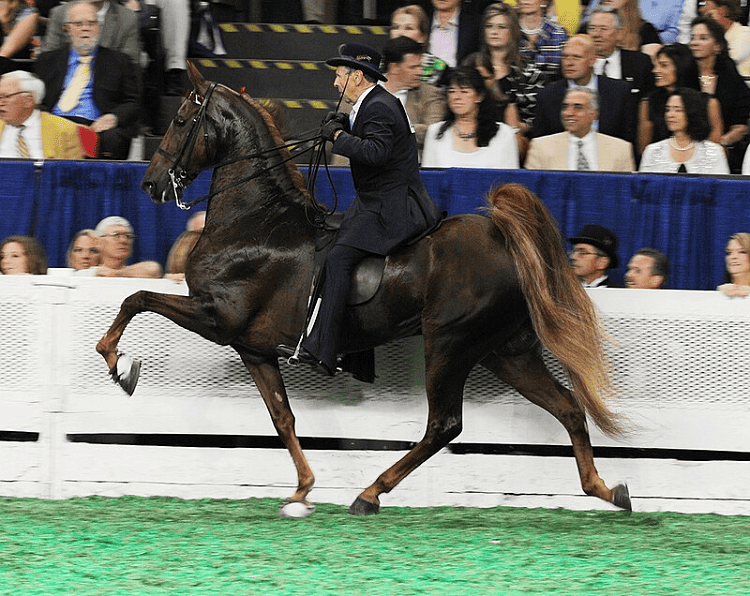
Some breeds include gaited horses, meaning their genetics are why they move with the extra gait.
But what about other breeds? Other horses can be taught to move in an artificial gait, while some horses (even ones that aren’t from the traditional gaited breeds) can naturally develop a gaited movement due to an injury or just because they find it comfortable.
When you ride your horse and their front-to-back movement (which typically lifts you from the saddle and pulls you back down) changes to a side-to-side movement (where your hips swing from side to side), your horse has switched to a gaited movement.
Gaited Horse Breeds
There are several horse breeds naturally built to provide a gaited movement.
Remember: This means they have an additional “gear” to shift into. These breeds can more easily assume the gaited movement, though some horses from other breeds can also move in a gaited movement, depending on their conformation.
The top gaited breeds include:
- The American Saddlebred (Saddler)
- The Missouri Fox Trotter
- The Tennessee Walking Horse
- Paso Fino
- Icelandic Horse
- Standardbred
- Rocky Mountain Horse
- Spotted Saddle Horse
Some of my students need clarification that only some of these horses move at the same gaited pace. There are several gaited paces these horses may move at.
The Icelandic horse has two unique gaits, the tölt and flying pace (a fast trot and a canter with pacing movement).
The American Saddlebred is often used for showing since it can perform several gaited movements, including an exaggerated high-stepping trot and running walk.
Gaited Horse Benefits
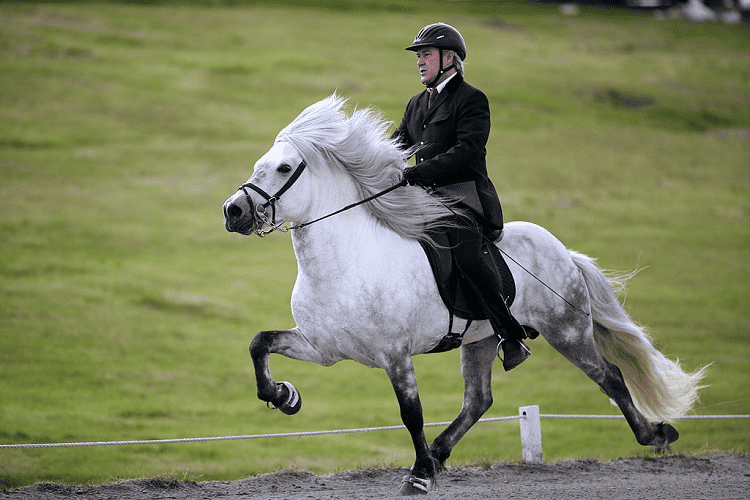
Many people prefer a gaited horse as they are incredibly comfortable to ride (once you get used to their unusual way of moving) since you don’t have to post exaggeratedly to ride their trot or canter gaits.
Other benefits of gaited horses include:
- Gaited horses are known to be mild-tempered, making them a winner with beginner riders, though this may not be true for all horses. My own Saddlebred mare is a hot coal and can have a temper tantrum like any red-head chestnut mare.
- Gaited horses are popular for cross-country pleasure rides as they always keep a foot on the ground, making them less likely to trip.
Gaited Horse Risks
The gaited horse’s movement may feel like the horse is “running off” with you since it’s powerful and very forward. This can scare beginner riders, causing them to hang in the horse’s mouth instead of relaxing and enjoying the ride.
Other risks with gaited horses:
- The gaited horse’s higher head carriage can result in the horse connecting their crest or neck with the rider’s face if the rider loses balance or falls forward.
- Additionally, the higher head carriage places more strain on the horse’s back, and if their tack fits poorly or the rider is unbalanced, it can severely injure their spinal area, withers, and stifles.
- Some riders report that a gaited horse isn’t suited to jumping, though many gaited horses excel in the jumping arena. It’s all about training the horse and knowing that a gaited horse will jump differently than a non-gaited horse.
- Depending on the size of your gaited horse’s movement, you may require a gaited-friendly saddle that allows more freedom across your horse’s shoulders and withers.
Training Your Gaited Horse
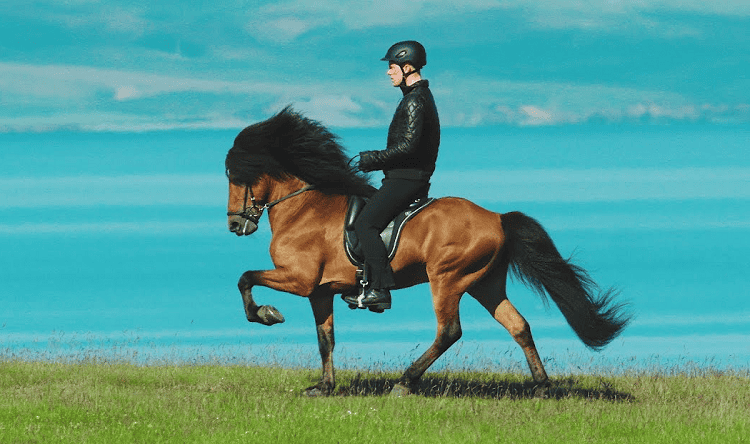
You’ve just purchased your first gaited horse. Congratulations!
Training a gaited horse is primarily similar to a non-gaited horse’s training. The trick is not to get on and expect your horse to simply gait without any cue or training. Even horse breeds with a natural gait should have a cue to ask for the gaited movement, just as you’d ask for a non-gaited movement, like the trot, canter, walk, or gallop.
Start by getting forward movement, and increase your horse’s acceptance of aids by working on their collection within a movement. Then, ask them forward more without letting them transition to the next gait but continuing to build on collection. This can be tricky for a beginner rider, and if you’ve never ridden or trained a gaited horse, it’s best to work with a reputable (and kind) trainer.
Once you transition your horse from a regular gait to the horse’s particular gait, begin using a cue (such as a click or kissing sound) to get to the unique gait more easily.
Different Paces for Gaited Horses
The gaited horse can move at different paces in addition to the non-gaited paces.
Here are a few of the gaits that gaited horses can offer, depending on their breed, training, and conformation:
Slow Gait or Stepping Pace
This is characteristic of the five-gaited Saddlebred horse. This broken pace is achieved by the horse simultaneously moving both legs on the same side (though the back leg lands first).
Running Walk
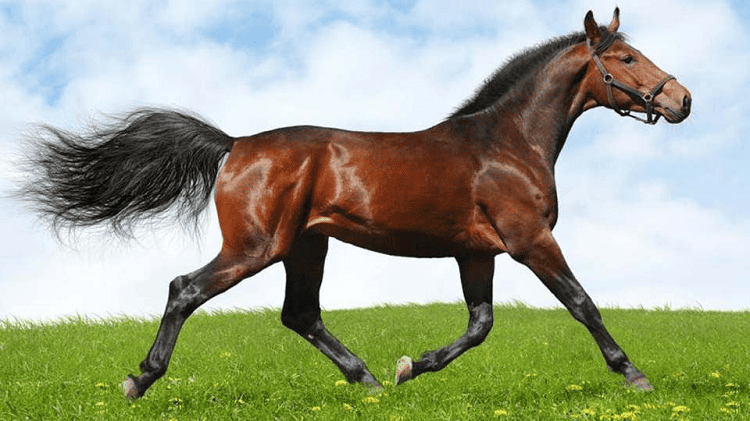
The running walk is similar to a walk, except the horse rocks back on the hind quarter, and their back legs over-track their front hooves, stepping ahead by as much as 18 inches. The gait may look super unnatural, but it’s very smooth and gliding.
Rack
The rack is a stepping pace, where the horse travels with each foot independently of the others. They always have one foot on the ground, creating a distinct four-beat movement.
Pace
The pace is a fast gait that gaited horses perform where two lateral pairs of feet leave and land on the ground simultaneously. Pacing is usually quicker than trotting, and it’s a popular gait for two-wheel carriage racing.
The Ugly Side of Gaited Horse Training
A much-debated issue with gaited horses is the training methods used to train them. To get the most exaggerated movement that looks showy and wins ribbons, trainers often resort to abusive methods that teach the horse to lift their legs higher than usual (or what’s safe for them).
Three of the most unnatural methods used during training include:
Stack Heels
The horse is fitted with heavy-weight horseshoes, often using thicker shoes that force them to pick their feet up higher to avoid tripping. The trainer removes the shoes a day before the show, and the horse continues moving with a higher step than they naturally use because they are used to the stacked heel.
The damage of this method is that the horse’s ligaments become unnaturally stretched, which can induce severe strain on the hoof integrity when wearing these heavy shoes.
Chain Weights
Other trainers go to extremes, including chain weights bolted to the horseshoes, adding an uncomfortable bouncing sensation when the horse moves. The result? A higher and quicker step.
Horses that train with chain weights can damage their ligaments and may injure their delicate joints.
Association Training
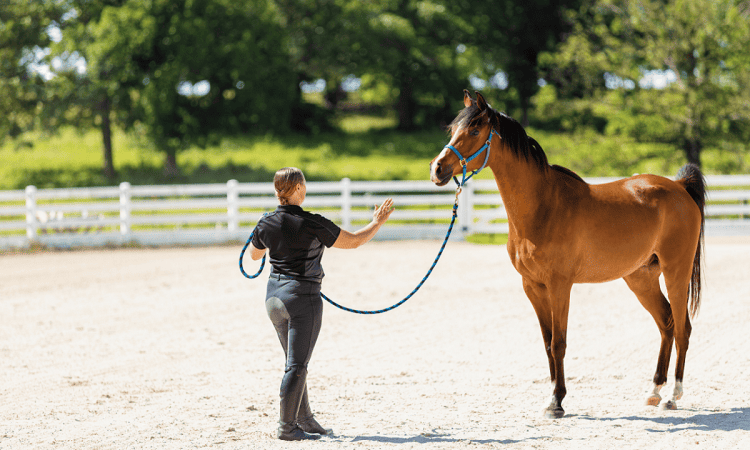
The most aggressive and abusive of horse training methods is associative training. Pain conditions the horse to lift their legs higher, as they fear the abuse.
During training, the trainer will use some form of pain (a gas flame across their feet is popular) and auditory stimuli (such as shaking a box of matches) to teach the horse that pain will follow if they don’t trot on with the high step.
During the competition, the horse is encouraged to use the excessively high step by the sound of matches shaking in the rider’s hand or pocket. The trauma and abuse of this method need no explanation about why it’s bad.
Fortunately, abusive training methods are banned from the training ring. If a trainer is caught using these methods, they may lose their training license and registration with the Gaited Horse Association. Sadly, what happens behind closed doors is often unseen.
FAQs
Answer: Gaited horses are super comfortable to ride, and you don’t require a particular skill to ride them.
Answer: A gaited horse can move each hoof independently. Gaited horses can create different speeds and movements, including the rack, pace, trot, and running walk.
Answer: A regular horse has four basic paces (walk, trot, canter, gallop), and while a gaited horse has the same movements, they can perform these with different ways of landing their feet, giving them a smoother action and faster speed.
A gaited horse’s walk may keep up to a horse in trot and canter thanks to the extreme speed and distance covered.
Conclusion
I love my Saddlebred mare, and while she’s not a true gaited horse, she is extremely comfortable, and her extended trot (a type of pacing movement) is to die for. She can trot like an average horse, but normal horses can’t achieve her movement without training.
So, if you want a super comfortable horse that can be really obedient and offers you a flashy way of moving, consider getting a gaited horse. For more information on horse training, read my horse training guide.

